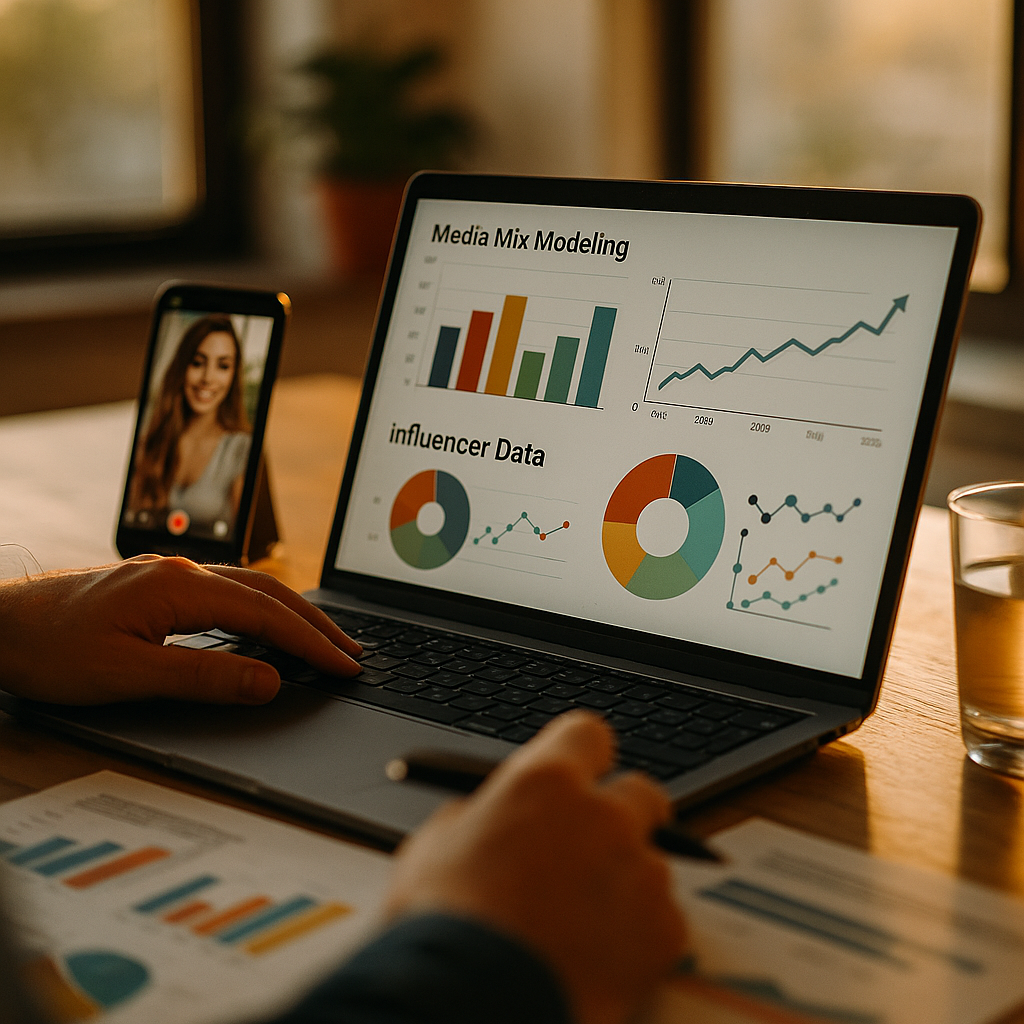Building a media mix model (MMM) that accurately includes influencer marketing is crucial for brands optimizing ROI in 2025’s fast-evolving digital landscape. As influencer campaigns command larger budgets, it’s essential that these investments are properly attributed and measured. Discover how to establish a comprehensive MMM that gives influencer partnerships their rightful credit—and maximizes your multi-channel strategy.
Understanding Media Mix Modeling for Influencer Marketing
Media mix modeling has long been an essential tool for marketers to evaluate how different channels—like TV, digital, and print—contribute to business outcomes. With influencer marketing now a major force, accurately reflecting its impact in MMMs is non-negotiable. Influencer campaigns often drive both direct and indirect lift, making robust modeling vital for measuring true cross-channel effects and informed budget allocation.
- Key challenge: Influencer marketing data is often more granular and unstructured than paid ads or traditional media.
- Impact pathways: Influencer content can drive sales, awareness, and engagement both directly (trackable links) and indirectly (word-of-mouth, multi-touch journeys).
- Accounting for influencer effect ensures all media channels are fairly compared, boosting confidence in marketing investment decisions.
Collecting and Preparing Influencer Marketing Data
High-quality data is foundational to effective media mix modeling. For influencer marketing, this often involves integrating disparate sources and ensuring they’re compatible with other marketing data. Best practices for 2025 include:
- Standardize influencer metrics: Capture consistent data such as reach, impressions, engagement, click-through, and unique attributed conversions.
- Aggregate influencer tiers: Group influencers by size (e.g., nano, micro, macro) to simplify variable inclusion.
- Incorporate campaign timing: Use detailed timestamps to accurately align influencer activity with sales and brand lift.
- Scrub and deduplicate: Eliminate bot-driven engagement, fake followers, and repetitive data to ensure clean modeling inputs.
Ensuring rigorous data hygiene helps avoid double counting and increases confidence in interpreting influencer outcomes versus other media spend.
Integrating Influencer Data with Traditional Media Channels
One of the key challenges is harmonizing influencer marketing data with more standardized channels. An accurate MMM in 2025 involves:
- Matching touchpoints: Align influencer exposure windows with those of other media—such as broadcast flighting or digital campaign dates.
- Controlling for overlapping effects: Recognize that influencer activity may amplify (or be amplified by) concurrent brand campaigns, requiring statistical controls or interaction variables in the model.
- Attribution windows: Define clear windows for counting sales or website visits as influenced by a specific post or video.
This step ensures influencer marketing isn’t underappreciated simply because its effects are less directly tied to last-click attribution or immediate conversions.
Selecting Appropriate Modeling Techniques in 2025
Advancements in statistical modeling allow marketers to better capture the nuanced impact of influencer marketing. When building a modern MMM, consider these approaches:
- Regression-based models: Use multi-variable regression to quantify the incremental lift of influencer spend while controlling for other media and seasonality.
- Bayesian methods: Incorporate prior knowledge and continuous learning to update influencer impact estimates as new campaign data becomes available.
- Hierarchical modeling: If running influencer campaigns at regional or demographic levels, consider multi-level models that reflect local nuance.
- Synthetic control methods: Where feasible, compare “influencer-exposed” groups against similar unexposed groups to isolate true effect.
Combining these methods according to brand needs can surface insights on both the direct and halo effects of influencer activity, even amid complex customer journeys.
Validating and Interpreting Your Influencer-Enabled Media Mix Model
With your MMM built, rigorous validation ensures you confidently act on its findings. Steps include:
- Holdout testing: Reserve some influencer activity for out-of-sample validation, comparing predicted vs actual outcomes.
- Scenario planning: Run “what if” scenarios to gauge reallocating budget toward or away from influencers.
- Cross-model comparison: Compare results with attribution models or experimental lifts from influencer campaigns to check for consistency.
Transparency in model limitations—such as lag effects or proxy measures—ensures organizational trust and responsible budget shifts. Clearly communicate influencer ROI within the broader media context for informed decisions.
Best Practices for Marketing Teams in 2025
To get the most actionable insights from your influencer-inclusive media mix model, keep these practices in mind:
- Foster cross-team data collaboration: Bring influencer teams, media planners, and analysts together to align on goals and measurement.
- Win executive buy-in: Use clear, visual storytelling with your results to gain support for experimental influencer investments.
- Continuously iterate: Update your model quarterly or after major campaigns as influencer tactics and platform algorithms evolve.
- Invest in clean data pipelines: Automate data ingestion and validation for influencer performance wherever possible.
Following these principles ensures your MMM remains relevant, actionable, and a true reflection of multi-channel marketing performance.
FAQs on Building an Accurate Media Mix Model with Influencer Marketing
- How can you measure the real impact of influencer marketing in a media mix model?
By integrating clean, standardized influencer data—such as attributable sales, reach, and engagement—using statistical techniques that control for overlapping effects with other media channels. - Should influencer marketing be modeled as a separate channel or grouped with social?
In 2025, best practice is to model influencer activity as a distinct channel, given its unique creative formats, audiences, and impact pathways. - What are some pitfalls to avoid when including influencer data?
Avoid double-counting conversions, ignoring lag effects, and using raw follower or engagement numbers without proper cleaning for bots or fake accounts. - How often should your media mix model be updated?
Review and update quarterly, or after major influencer or cross-channel campaigns, to ensure accuracy as tactics and consumer behavior evolve. - Can small brands benefit from MMM with influencer marketing?
Absolutely. Even with smaller data sets, structured MMM approaches help optimize spend and demonstrate influencer ROI alongside other channels.
Including influencer marketing in your media mix model ensures a truly comprehensive view of marketing performance. Apply rigorous data collection, modern modeling, and stakeholder collaboration to build a model that unlocks actionable, trustworthy insights for 2025 and beyond.
